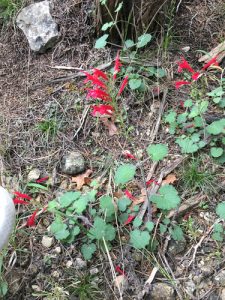This is a baby Ptelea trifoliata, or common hoptree. I noticed this plant because its large, vibrant green leaves while walking through Wild Basin. These leaves will turn dark green in the summer, and then yellow in the fall. It will grow to be 26 ft tall and 13 feet wide. Although I did not see any on this tree, typically in April common hoptrees have small, greenish white flowers in clusters on their leaves. The nickname “common hoptree” is allegedly from when the bitter bark was used as a substitute for hops when brewing beer. The bark has also been used for miscellaneous home remedies. This plant is both useful and cute!
http://www.inaturalist.org/observations/5540110






 Observation: http://www.inaturalist.org/observations/5922337
Observation: http://www.inaturalist.org/observations/5922337